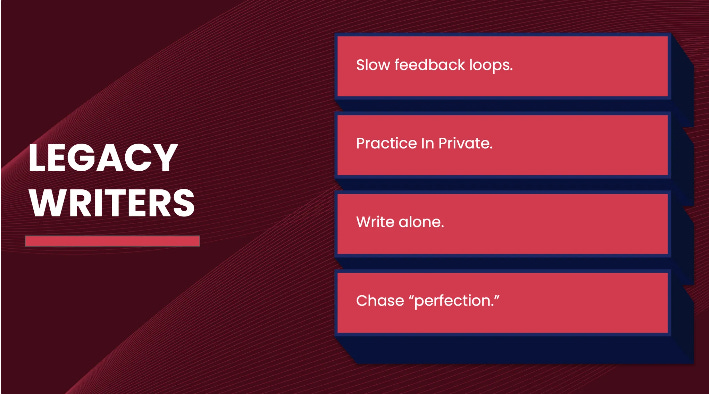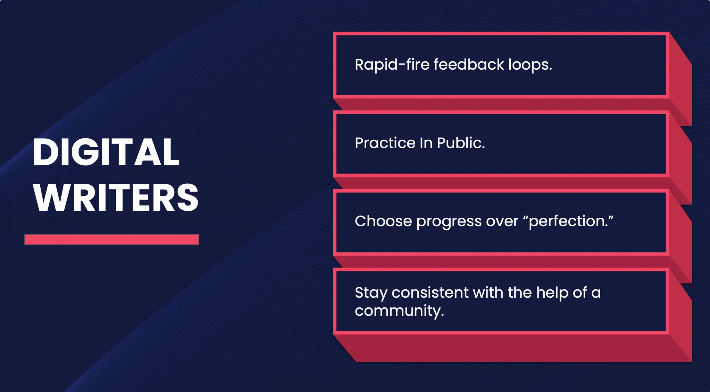A technique for generating content angles
3-minute exercise anyone can use to differentiate their writing
Hey there!
The fastest way to differentiate your writing is to say what no one else is saying.
The problem is most people in the same niche read the same articles, studies, and experts everyone else reads. Then consciously (or unconsciously) you end up saying the exact same things everyone else is saying, just in slightly different words. You think you’re being original, but you’re really just remixing the consensus.
So today, I’m going to show you a simple 3-minute exercise that breaks you out of that echo chamber and helps you find genuinely different angles.
Let’s break it down.
Step 1: Make a list of all the “conventional wisdom” in your industry or niche.
This is the stuff everyone in your niche already believes.
The goal here isn’t to evaluate whether these beliefs are true or false.
You’re just documenting what the masses already believe.
Step 2: Make a list of all the benefits of that existing industry or niche.
For years, I thought differentiation meant inventing completely new outcomes.
I thought I had to promise something nobody had ever promised before. But that’s not how it works. You’re not trying to invent new desires. You’re trying to speak to existing desires in a new way.
Again, write down 5-10 of these.
Step 3: Make a list of all the problems people complain about in that existing industry or niche.
For this step, go where your audience already hangs out and listen.
I’m talking Reddit, Facebook groups, YouTube comments—anywhere people feel safe complaining. Set a timer for 5 minutes and scroll. Every time you see someone say “I can’t...” or “Why is it so hard to...” or “I keep trying but...” Copy and paste it into a doc.
Do this and you’ll have 10-20 problems in your first sitting.
Now you’ve got three lists sitting in front of you: beliefs, benefits, and problems.
Step 4: Take each item on your lists and flip it.
For example, here’s how we did this within our beginner writing program, Ship 30 for 30.
First, we remind everyone how the writing world is “today.” (Aka: conventional wisdom.)
Then, we just say the opposite—which immediately presents the benefits of our approach as being “different.”
Very simple!
Take what everyone currently believes about an industry/niche.
Find ways to say the opposite.
The beauty of this system is it works in any niche.
Some of the most successful brands on the planet use this technique.
When everyone in outdoor apparel was screaming “Buy! Buy! Buy!” during the holidays, Patagonia ran full-page ads in The New York Times with a photo of their best-selling jacket and the headline:
“Don’t Buy This Jacket.”
They explained how consumerism harms the environment. How you should only buy what you need. How repairing gear is better than replacing it.
This violated every rule of advertising. A company telling customers NOT to buy their product? Insane.
But that’s exactly why it worked.
It positioned them as the anti-consumption outdoor brand—which, ironically, made people want to buy from them even more. Sales went UP 30% the following year.
Here’s why this works so well:
When you say the opposite of conventional wisdom, you immediately trigger curiosity.
The reader’s brain goes: “Wait, what? I thought X was true. Why are they saying Y?” And that question mark in their mind is what gets them to click, read, and pay attention.
You’re also attracting a specific type of person—the person who’s tried the conventional approach and it didn’t work for them, or the person who’s skeptical of the mainstream advice, or the person who just wants a different path.
The opposite game isn’t about lying or being contrarian for clicks.
It’s about finding the gaps in conventional wisdom and filling them with a better approach—or at least a different one that serves a different type of person. And when you do that consistently, you stop sounding like everyone else. You stop blending into the background. You become the writer people remember.
Try Thinking In Opposites
Spend 3 minutes right now making your three lists: conventional wisdom, benefits, and problems in your niche. Then spend another 3 minutes flipping each item and writing down the opposite.
Now, instead of brainstorming these yourself, you can get Claude to map your niche for you.
Here’s the prompt:
Keep reading with a 7-day free trial
Subscribe to Write With AI to keep reading this post and get 7 days of free access to the full post archives.






